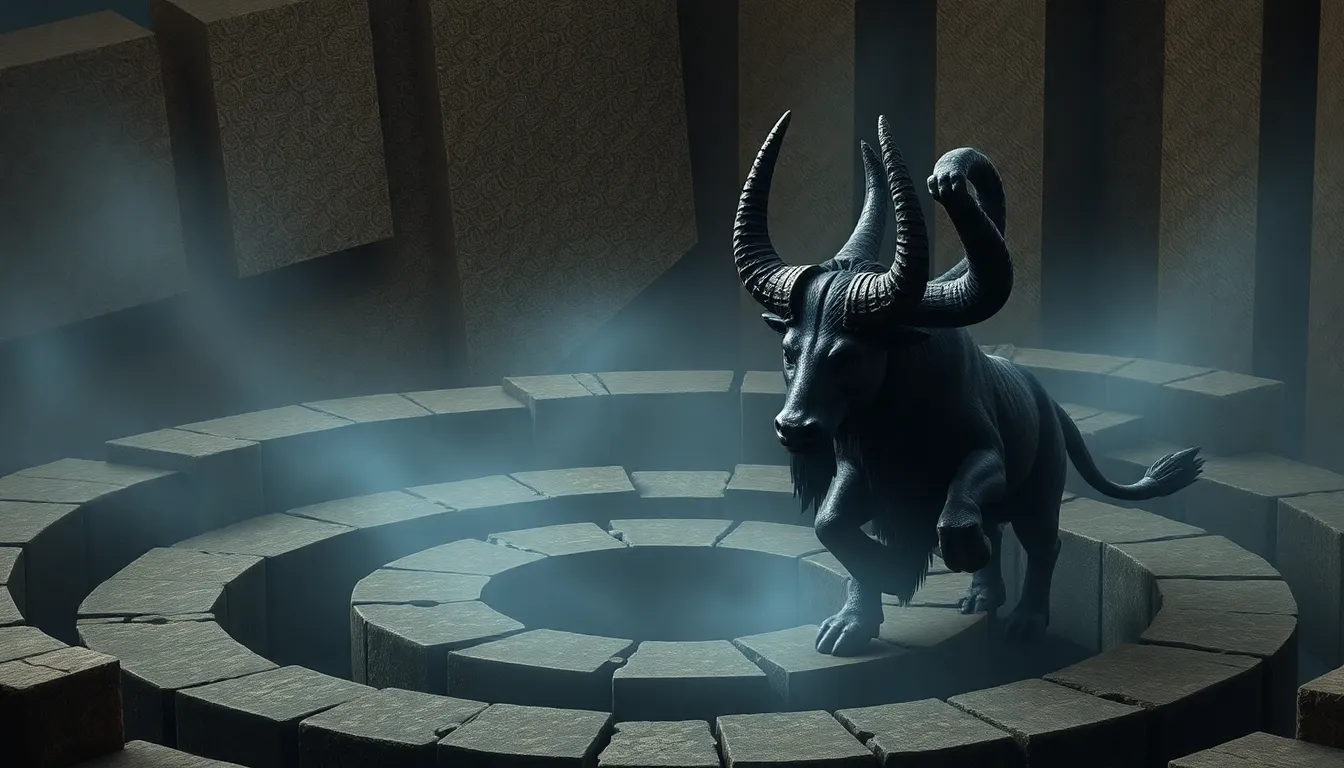The Minotaur and the Labyrinth: Lessons in Problem-Solving
I. Introduction
The myth of the Minotaur is one of the most famous tales in Greek mythology, weaving together themes of courage, ingenuity, and the struggle against insurmountable odds. At the heart of this myth lies the Labyrinth, a complex maze that serves as a powerful metaphor for the intricate problems we face in life. This article aims to explore the lessons in problem-solving that can be drawn from the Minotaur myth, particularly through the lens of the Labyrinth.
II. The Minotaur Myth: A Brief Summary
The origins of the Minotaur and the Labyrinth are steeped in legend. The Minotaur, a creature with the body of a man and the head of a bull, was the offspring of Queen Pasiphaë of Crete and a magnificent bull. To contain the beast, King Minos commissioned the architect Daedalus to construct an elaborate Labyrinth beneath his palace, ensuring that the Minotaur could not escape.
Key characters in this myth include:
- Theseus: The heroic figure who volunteered to face the Minotaur.
- Ariadne: The daughter of King Minos, who aids Theseus in his quest.
- The Minotaur: The monstrous creature representing the challenges that seem insurmountable.
The Labyrinth symbolizes the complexity of life’s problems, where the path to solutions is often convoluted and difficult to navigate. It serves as a reminder that challenges can be daunting but are not impossible to overcome.
III. Understanding Complex Problems
Complex problems are characterized by their multifaceted nature, where multiple variables interact in unpredictable ways. They often involve:
- Ambiguity: Lack of clear answers or straightforward solutions.
- Interconnectedness: Various factors that influence one another.
- Dynamic environments: Situations that evolve over time, requiring adaptability.
The Labyrinth exemplifies this complexity, with its winding paths and dead ends representing the convoluted nature of real-life challenges. Examples of complex problems in various fields include:
- Healthcare: Managing public health crises, such as pandemics.
- Environmental issues: Addressing climate change and its myriad effects.
- Business: Navigating market fluctuations and consumer behavior.
IV. The Role of Strategy in Problem-Solving
Theseus’s journey through the Labyrinth showcases the importance of strategy in navigating complex problems. With the help of Ariadne, who provided him with a ball of thread, Theseus was able to find his way back after confronting the Minotaur. This thread symbolizes a strategic approach to problem-solving, allowing one to retrace steps and learn from the journey.
Key techniques for developing effective strategies in everyday challenges include:
- Planning: Outline your approach before diving into a problem.
- Breaking down the problem: Divide complex issues into manageable parts.
- Using tools: Employ resources and techniques that facilitate navigation and understanding.
V. Embracing Creativity and Innovation
Creative thinking is essential for effective problem-solving, particularly when conventional methods fail. The Minotaur myth encourages us to think outside the box, as evidenced by Theseus’s innovative use of Ariadne’s thread.
Case studies of innovative problem-solving inspired by the myth include:
- A company using design thinking to enhance user experience.
- An organization developing unconventional strategies to overcome social issues.
- Scientific breakthroughs achieved through creative approaches to research.
VI. The Importance of Perseverance and Resilience
Theseus’s journey through the Labyrinth is a powerful metaphor for persistence. Despite the daunting challenge, he remained determined to confront the Minotaur. This aspect of the myth emphasizes the importance of resilience in problem-solving, as setbacks are often part of the journey.
Strategies for cultivating resilience include:
- Maintaining a positive mindset, focusing on solutions rather than problems.
- Learning from failures and viewing them as opportunities for growth.
- Building a support network to encourage and motivate through challenges.
VII. Collaborative Problem-Solving: Lessons from the Myth
The myth of the Minotaur also highlights the significance of collaboration. Theseus did not face the Minotaur alone; he relied on Ariadne’s help to navigate the Labyrinth. This partnership underscores how teamwork can enhance problem-solving abilities.
Practical tips for fostering collaboration in diverse teams include:
- Encouraging open communication and the sharing of ideas.
- Creating an inclusive environment where all voices are heard.
- Promoting shared goals that unite team members in their efforts.
VIII. Conclusion
The Minotaur and the Labyrinth provide timeless lessons in problem-solving that remain relevant today. From strategic planning and creative thinking to resilience and collaboration, these themes offer valuable insights into navigating life’s challenges.
As we face complex problems in our personal and professional lives, let us draw inspiration from this ancient myth. By applying the lessons learned from Theseus, Ariadne, and the Labyrinth, we can develop the skills necessary to confront and overcome the obstacles that lie ahead.
In closing, the enduring relevance of myths like that of the Minotaur serves as a reminder of our shared human experience in tackling adversity and finding our way through the complexities of life.




